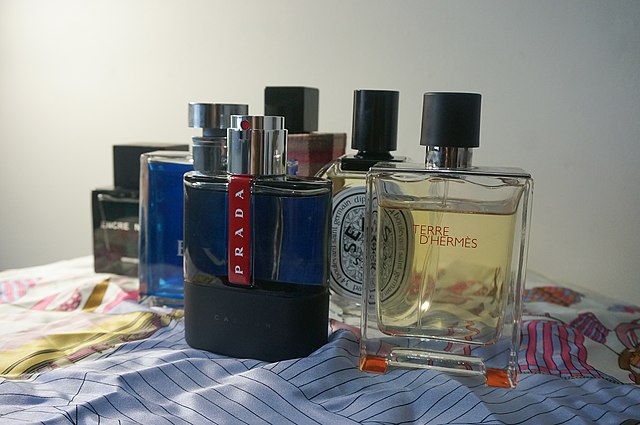What Does “Pour Homme” Mean?
“Pour homme” is a French phrase that translates to “for men” in English. It is commonly used in the fragrance industry to designate scents specifically formulated for male consumers. Understanding this term is essential for anyone interested in perfumes and colognes, as it helps distinguish between products designed for different genders.
Origins of the Term
The use of “pour homme” can be traced back to the traditional practices of perfumery, where fragrances were often categorized based on gender. The term signifies not only the intended audience but also reflects the cultural and marketing strategies employed by fragrance brands. The distinction between male and female fragrances has evolved over time, but “pour homme” remains a staple descriptor.
Characteristics of “Pour Homme” Fragrances
Fragrances labeled as “pour homme” typically exhibit certain characteristics that appeal to male consumers. These may include:
- Scent Profile: Generally, “pour homme” fragrances feature notes that are considered masculine, such as woods, spices, and fresh citrus. Common ingredients include:
- Citrus: Lemon, bergamot, and grapefruit
- Spices: Black pepper, cardamom, and nutmeg
- Woody Notes: Cedarwood, sandalwood, and vetiver
- Herbal Notes: Lavender and basil
- Concentration Levels: Many “pour homme” fragrances are available in various concentrations, such as Eau de Toilette (EDT) or Eau de Parfum (EDP). The concentration affects the longevity and intensity of the scent:
- Eau de Toilette (EDT): Typically contains 4-10% fragrance oils.
- Eau de Parfum (EDP): Contains 8-15% fragrance oils for a stronger scent.
Cultural Significance
The term “pour homme” is not just a label; it reflects societal norms regarding masculinity and grooming. In many cultures, there has been a historical association of certain scents with masculinity. As gender norms evolve, so too do the interpretations of what constitutes a “masculine” fragrance.
Comparison with “Pour Femme”
The counterpart to “pour homme” is “pour femme,” which means “for women.” While both terms serve similar purposes in indicating gender-specific fragrances, they often differ significantly in scent profiles:
| Feature | Pour Homme | Pour Femme |
|---|---|---|
| Translation | For men | For women |
| Common Notes | Woods, spices, citrus | Floral, fruity, sweet |
| Concentration | EDT or EDP | EDT or EDP |
| Cultural Context | Traditionally masculine scents | Traditionally feminine scents |
Popular Examples of Pour Homme Fragrances
Several well-known fragrances carry the “pour homme” designation. Here are a few notable examples:
- Acqua Di Gio Pour Homme by Giorgio Armani: A fresh aquatic scent with citrus and floral notes.
- Dior Sauvage Pour Homme: A spicy and woody fragrance that has gained immense popularity.
- Azzaro Pour Homme: A classic fragrance known for its aromatic and woody composition.
Buying Tips for Pour Homme Fragrances
When selecting a “pour homme” fragrance, consider the following tips:
- Know Your Preferences: Identify which scent profiles you enjoy—citrus, woody, spicy, or fresh.
- Test Before You Buy: Always test fragrances on your skin before purchasing. Body chemistry can alter how a scent smells.
- Consider Occasion: Choose lighter scents for daytime wear and more intense fragrances for evening or special occasions.
- Research Concentration Levels: Understand the difference between EDT and EDP to select a fragrance that meets your longevity needs.
FAQ Section
What does “pour homme” mean?
“Pour homme” means “for men” in French and is used to label fragrances designed specifically for male consumers.
How does “pour homme” differ from “pour femme”?
While both terms indicate gender-specific fragrances, “pour homme” typically features more masculine notes like woods and spices, whereas “pour femme” often includes floral and fruity scents.
What are some popular pour homme fragrances?
Notable examples include Acqua Di Gio Pour Homme by Giorgio Armani, Dior Sauvage Pour Homme, and Azzaro Pour Homme.
What should I consider when buying a pour homme fragrance?
Consider your scent preferences, test the fragrance on your skin, think about the occasion for wear, and understand the concentration levels.
Are there any specific notes commonly found in pour homme fragrances?
Yes, common notes include citrus (like lemon and bergamot), spices (like black pepper), woody notes (like cedarwood), and herbal notes (like lavender).
Conclusion
In summary, “pour homme” is an essential term in the world of perfumery that signifies fragrances intended for men. Understanding this term can enhance your shopping experience by helping you navigate through various options tailored to male preferences. As societal norms around gender continue to evolve, so too will the interpretations of what makes a fragrance suitable for men.For further information on this topic, you can refer to Wikipedia.



